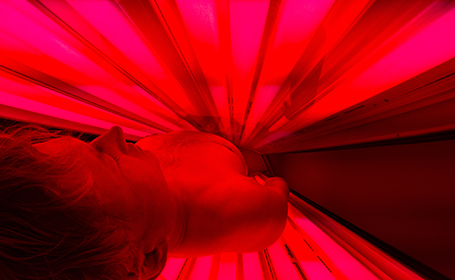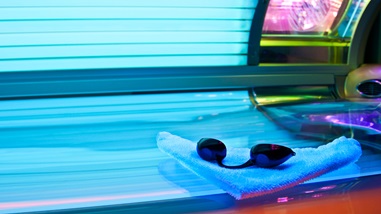
5 vital facts about sunbeds and skin cancer
Most people know there is a link between sunbeds and skin cancer, but how bad are they really?
Here are five essential facts about skin cancer and sunbeds that you should be aware of before deciding whether to use one.
1. Using sunbeds for the first time before the age of 35 increases your risk of melanoma by 60%

NHS reports show that using sunbeds is just as dangerous for young people as it is for older people, even although the damage to your skin caused by sunbeds is less visible. According to Cancer Research UK, each time you use a sunbed you’re damaging your skin, but the evidence suggests that it’s particularly risky if you’re under 35. If you start using sunbeds when you’re younger than 35, you’re increasing your risk of melanoma by 60%. Melanoma is the most dangerous and aggressive type of skin cancer. Although it can be serious, early stage melanoma can be treated with surgery.
Ideally, you should not use sunbeds at all, but if you do, it's important to know how to use a sunbed safely.
Different skin types react differently to UV radiation. Assess your skin type to understand your level of risk. The Skin Cancer Foundation reports that people with fair skin are at a higher risk of developing skin damage and skin cancer from
Before using a sunbed, it's wise to talk to a dermatologist, especially if you have a history of skin conditions, skin cancer, or a family history of skin cancer. UV exposure.
Always wear appropriate eye protection designed for indoor tanning to protect your eyes from the intense UV rays, and stick to the recommended exposure time limits provided by the sunbed facility. Do not exceed these limits.
It's important to understand that even if you take precautions, there is no truly safe way to use sunbeds. The best approach for your long-term health is to embrace your natural skin tone and use sunscreen when spending time in the sun to protect your skin from harmful UV rays.
The maximum legal radiation from sunbeds is not allowed to exceed 11 standard erythema doses per hour... This is not a safe level of UV radiation – it is the equivalent to the strength of the sun at the tropics, near the equator.
2. The radiation from sunbeds is equivalent to ‘extreme’ tropical sun
The maximum legal radiation from sunbeds is not allowed to exceed 11 standard erythema doses per hour (erythema is the reddening of the skin caused by sunburn). This is not a safe level of UV radiation – it is the equivalent to the strength of the sun at the tropics, near the equator.
The World Health Organisation describes this level of UV radiation as ‘extreme’ – it’s the strength of sun that would make you run for the shade if you were really out in it.
3. The visible signs of UV-related skin damage can take 20 years to appear
We’re conditioned to see a tan as a sign of health, and we have become used to seeing magazines full of tanned people. But the reality is that a tan is actually a sign of damage – it’s something your body produces to try and protect the skin from further harm.
However, you can’t always see the other damage that UV radiation does to your skin straight away. In time, sun-damaged skin starts to look coarse, leathery and wrinkled – but it can take 20 years for the damage to appear.

4. Malignant melanoma is the most common form of cancer among women in their 20s
The harmful effects of tanning don’t always wait until later in life to appear, however. Malignant melanoma has recently overtaken cervical cancer to become the most commonly diagnosed form of cancer among women in their 20s. According to Melanoma UK, radiation exposure, a history of childhood tanning, and sunburn are some of the leading forms of this type of cancer.
Melanoma is also one of the most serious cancers for young people, but it can be treated.
You can have surgery to remove early-stage melanoma, whereas treatment for advanced melanoma usually involves radiation therapy, targeted therapy, or immunotherapy. Radiation therapy can be used if the cancer has spread to your lymph nodes and to prevent the cancer from recurring.
There is a common misconception that using sunbeds is a good way to get the recommended level of vitamin D... But any sunlight will do.
5. You make enough vitamin D by going about your daily life
There is a common misconception that using sunbeds is a good way to get the recommended level of vitamin D. Vitamin D is something your body creates when it is exposed to UV radiation. But any sunlight will do – and most people produce plenty of vitamin D simply by going about their daily lives.
People with naturally brown or black skin, people over the age of 65, pregnant and breastfeeding women and people who are housebound are more likely to have a vitamin D deficiency. It’s recommended that people with a vitamin D deficiency should take a 10 microgram supplement each day.
Discover more about skin cancer
Concerned about skin cancer? You can find out more in our consultant Q&A about the disease here.
Tags
How do I book an appointment?
If you're concerned about symptoms you're experiencing or require further information on this subject, talk to a GP or see an expert consultant at your local Circle Hospital.